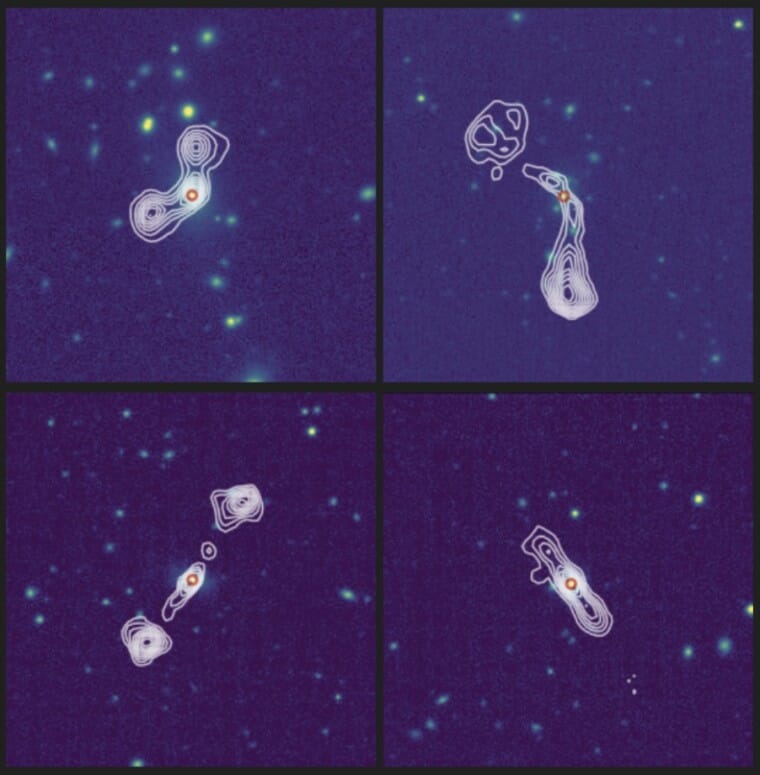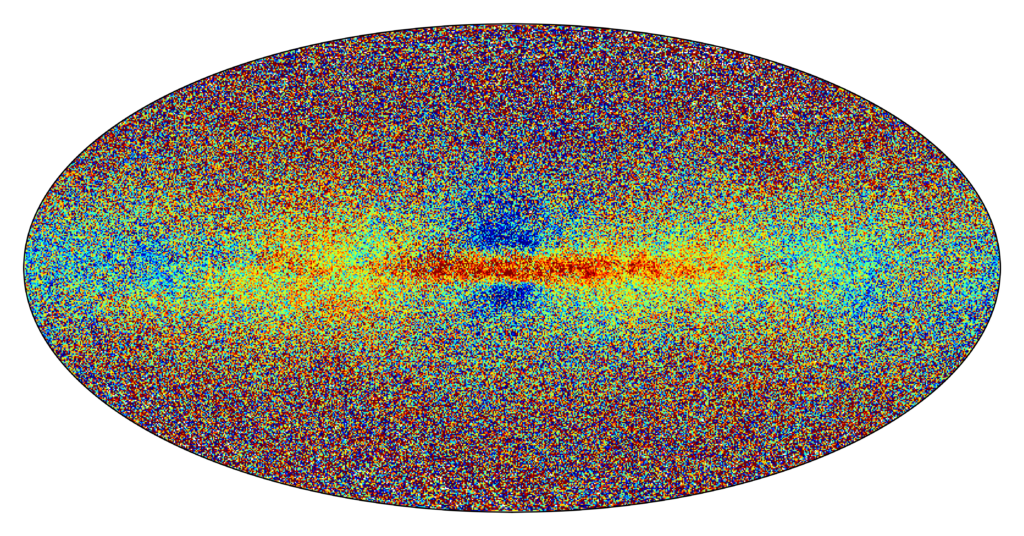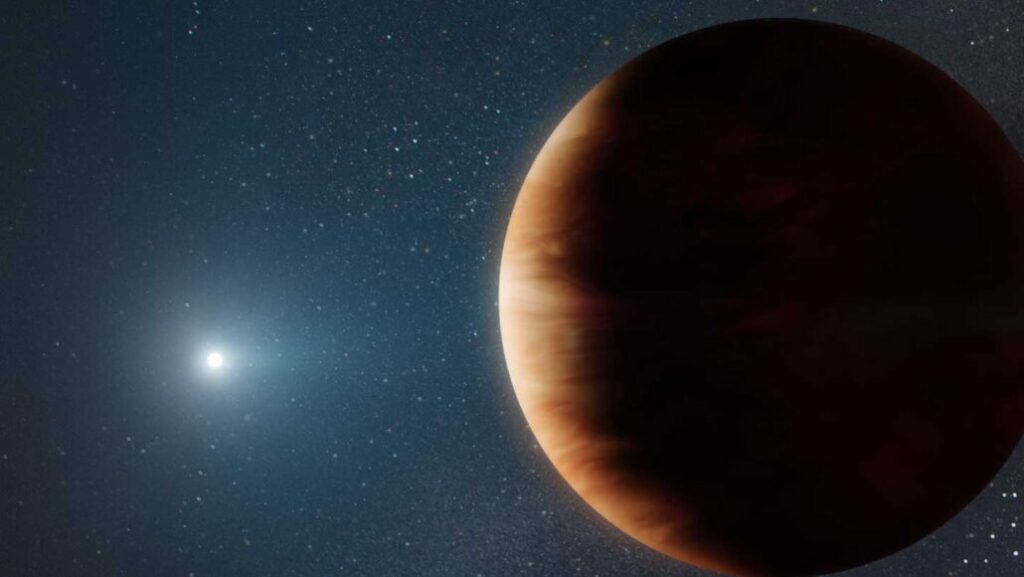The Gaia mission released its third ‘treasure trove’ of observations and calculations of more than two billion stars in the Milky Way, including ‘starquakes’, stellar DNA, binary star systems, and more. Plus, day one of the American Astronomical Society press conferences and updates on Starship and NASA’s TROPICS-1 mission.
Podcast
Show Notes
Environment shapes galaxy jets
- University of Wisconsin-Madison press release
- “How Does Environment Affect the Morphology of Radio AGN?“, Melissa Elizabeth Morris, Eric Wilcots, Eric Hooper, and Sebastian Heinz, 2022 May 19, The Astronomical Journal
The energy of dust varies with shape
- UTSA press release
NASA CubeSats lost during Astra launch
- NASA press release
FAA rules on SpaceX Boca Chica site
Gaia drowns astronomy community in new data
- ESA press release
- Gaia Data Release 3 Papers (ESA)
Transcript
In this episode, we talk about a spinning satellite and a spinning rocket, only one of which was supposed to spin.
We also have the latest news from the first day of AAS 240 and the amazingness that is the third data release from the Gaia mission.
All that and more, right here on the Daily Space.
I am your host Dr. Pamela Gay.
And we’re here to put science in your brain.

Today is one of those delightful days when we get to actually do one of those things we always say we’re going to do: we get to revisit a story we first introduced back in May of 2021. This is the story of galaxies with bent jets.
First some background: When material falls into a black hole, it can’t fall straight in due to the ever-annoying property of angular momentum. Instead, the material gets caught up in spiraling orbits, where it gets hot and dense. Magnetic fields get involved, and pretty soon, this disk of material is acting like a rail gun that fires electrons out of galaxies along the rotation axis of the systems. These electrons in motion end up radiating away radio signals, and thus, we see galaxies with jets when we look at the sky with radio eyes.
And most of the time these arms are sticking straight out of the galaxies like epic fountains, but sometimes, they are bent into all sorts of weird shapes.
And in new research coming from Mellisa Morris, these twisted systems are just drawing attention to their environment. When a radio galaxy exists in a fairly empty region of space, it won’t be moving very fast, and there won’t be a lot for it to interact with. Thus, low-density environments give us galaxies with those classic straight jets.
Put that same galaxy in the environment of a galaxy cluster, and it will accelerate to high velocities and be buffeted by surrounding material as it falls toward the cluster’s center. These galaxies, like a fountain in a hurricane, will have jets bent in myriad directions by this one-two punch of motion and external forces.
And while it is tempting to say that, thus, high-density environments give us the curly wurly galaxy jets, there is a fascinating exception. That massive galaxy that sits in the gravitational sweet spot in the center of a cluster doesn’t really move. It just grows, and when it eats, it produces some of the mightiest jets in the universe and sends them powering out like water cannons beaming material straight into their surroundings.
So there can be multiple reasons a galaxy develops those boring straight jets, but only one reason – so far – for all the brilliantly twisted other shapes they can make.

In looking out at the universe, a lot of our energy goes into looking at the big stuff. Stars, galaxies, planets, and even asteroids aren’t all that small in the grand scheme of things. The thing is, all that stuff — it’s all built of gas and dust, and that dust is often the core bit of grit that structures formed around, like water drops forming on dust in the atmosphere.
We don’t talk about dust in detail very often because it is surprisingly complex. The most basic aspects of dust can be deeply confusing: things as simple as what’s its shape and why?
In new research, also presented at the AAS meeting, researcher Angela Speck considers this matter of shape. Carbon dust, for instance, can come in messy shapes that lack any clear structure. This is called amorphous dust. Well-structured – crystalline – dust is also found. In examining why dust has different structures, Speck noted that warm material can form amorphous dust, but as the dust cools, crystal structures can emerge. The crystal structure actually has a lower temperature, so cooling dust can rewarm as its structure changes from messing to symmetric.
Understanding that amorphous dust stores heat that can be released changes how we have to view structure formation. Now, as well as blocking starlight, we need to know that dust can reheat its surroundings.
It’s the little things – like dust – that ultimately affect so much.
And now, we’re going to look at more fiery targets: rockets.

On Sunday, June 12 at 17:43 UTC, an Astra Rocket 3.3 lifted off from SLC-46 at the Cape Canaveral Space Force Station in Florida, carrying the first two satellites of NASA’s TROPICS microwave weather satellite constellation.
The ascent proceeded nominally through max Q, main engine cut off (MECO), fairing separation, and second-stage ignition — all events that caused problems in previous flights. About one minute before the scheduled engine cutoff, however, the second stage engine suddenly shut down, and the vehicle began to tumble. Nothing seemed to have gone wrong up to this point in the flight.
The vehicle was over one kilometer per second short of orbital velocity. About a kilometer short doesn’t sound like a lot, but you have to remember that a significant portion of the total velocity gained is in the final portions of the burn because of acceleration.
The webcast switched back to a map, with the hosts coming back later to officially confirm the mission was lost.
As of press time, Astra has not announced any indication as to the cause of the failure, but they did apologize to their customer, NASA. Space is hard, but it does not inspire confidence in Astra to have two successes out of seven orbital attempts of Rocket 3. Hopefully, this will not be the end of the company.
TROPICS is a neat constellation, and its whole concept would have been enabled by launching lots of cheap rockets. After the failure, NASA said that the mission can still be done with four CubeSats in two orbits, indicating that there probably won’t be a replacement mission to fly the full constellation. NASA’s Thomas Zurbuchen also reaffirmed NASA’s decision to go with Astra after the failure, mentioning that the total cost for all three launches was less than $10 million. Astra will work with NASA and the Federal Aviation Administration on a failure investigation and return to flight again.
TROPICS will be a constellation of 3-Unit CubeSats with a microwave radiometer. It’s passive, meaning that it only listens for signals rather than making its own and listening for the reflection. It images in one band and is sensitive to two other different bands for temperature and moisture sounding. The payload is 1U of the satellite, with the systems that help the satellite do its job – called the bus – contained in the other two units.

The day after, June 13, the FAA finally released its decision on the Programmatic Environmental Assessment (PEA) for orbital launches of SpaceX’s in development Starship/Super Heavy rocket from Boca Chica. Many in the space fandom were complaining about the FAA taking forever to do this, but honestly, they did it very, very quickly, taking only a year, which is about as long as other environmental reviews have taken.
The ruling was a Mitigated Finding Of No Significant Impact, meaning that the launches would be able to go ahead with several significant requirements and limitations. The most significant limitation is only 5 orbital launches and only 5 suborbital launches from the site per year.
The FAA is on SpaceX’s side in this, contrary to public impressions. They want the launches to happen. By making sure every base is covered in this environmental review, they can avoid lengthy litigation which could bog down the project even further and possibly cause a more detailed and even longer environmental review.
SpaceX still needs to apply for several more permits before spaceport and launch licenses will be given, including applying to the United States Army Corps of Engineers for filling wetlands and to the State of Texas for discharging pollutants in a safe manner. There are almost 100 mitigations in the 40-page document, mostly pertaining to environmental impacts due to launching the largest rocket in history from a wildlife refuge.
Many of these mitigations have already been implemented, and the remaining ones aren’t too difficult. For example, SpaceX will be working with the Fish and Wildlife Service on animal crossings to help ocelots and other wildlife get to and from habitats and restore certain areas of the refuge.
Additionally, SpaceX will be limited on how often the road and beach can be closed, with eighteen specific holidays where the road cannot be closed and a yearly limit on how many hours it can be closed.
Other basic mitigations SpaceX must implement are donating to specific local environmental groups and hosting regular tours of the facility for local school children focusing on STEM, as well as putting up interpretive signs around the site in English and Spanish focusing on the wildlife in the area and SpaceX’s activities. Launch site lighting and its impacts on the wildlife and humans around the area get a whole section of the report.
One of the more unusual requirements is for SpaceX to prepare a report on the history of the Mexican and Civil Wars as they relate to the area. This is likely because the Palmito Ranch Battlefield National Historical Monument is in the area that will be closed during launch operations for a not insignificant part of the year.
Still, most mitigations are extremely basic, and SpaceX should have no problem meeting this very low bar.
Up next for SpaceX is getting the flight hardware through a testing campaign without breaking it and finishing building the actual launch pad. Part of this testing campaign will be a full 33-engine static fire of the Super Heavy booster; SpaceX has so far done six engines on the Starship. And of course, they need to finish getting the permits mentioned in the PEA and do all of those various mitigation tasks.
Given the limitations required, I think the actual regular launches of Starship will happen at the Cape, where SpaceX is building a whole separate factory and launch pad for the big rocket.
Speaking of that, SpaceX is seeking to outfit SLC-40 with some of the same crew access facilities as LC-39A and launch Crew Dragon from there in the event of a Starship launch failure damaging that pad and cutting off regular access for NASA crews to the ISS. This is in response to NASA’s concerns about such an event; however, getting approval for these mods could take a while.
Next up, we’re going to talk about the latest data release from the Gaia mission.
I’ve said it before, and I’ll say it again: Gaia is my favorite space telescope. With its completely unique design, this telescope scans the sky and sends the photons it captures across instrument after instrument. Like a conveyor belt of science, the telescope rotates such that an object’s light will go from being imaged in various colors, to being split out into spectra, allowing its chemistry and motion to be measured.
For the past eight years, Gaia has been cataloging nearly two billion points of light, and this data has been getting released in massive digital catalogs that allow massive statistical studies of both the contents of our galaxy and beyond. Martin Barstow puts it this way: Gaia data has been moving through astronomy like a tidal wave. It’s the most productive observatory we have available to use right now, and it’s transforming both astronomy and our understanding of the Universe.
With each new data release, our understanding of how those points of light change improve. We are able to untangle the motions caused by planets, see the orbits of binary stars, and even track the passage of star clusters orbiting in our galaxy.
And now, the much-anticipated Data Release 3 is out, and the science, the flood of updates and discoveries, is just beginning.
Some of what we’re seeing announced are the kind of science we knew Gaia would do. In this latest release, we see mapped in exquisite detail the diverse chemistry of the stars in our corner of the Milky Way.

Stars form in clusters that start with a single, fairly well-mixed combination of gasses and dust, and that cloud will fragment into solar system-forming cocoons of material. In general, all the stars in a single burst of star formation will have the same composition. And some small galaxies only have a single burst of star formation.
The earliest star clusters and small galaxies were formed from almost pure hydrogen and helium left over from the Big Bang. Over time, as stars lived and died, they created heavier elements in their cores and during supernovae, and these elements got mixed into the clouds that formed future generations of stars. This wasn’t a smooth process. The entire universe didn’t get equally mixed up over time. Some places were slower to get started and slower to become chemically complex. Other places evolved in a firework display of explosions early in the universe. This diversity means our modern universe of stars forms with different chemical mixtures.
We can use our understanding of stars and chemical enhancement to understand how streams of stars with the same composition represent infalling small galaxies. We can see elongated blobs in our disk and recognize them as local star clusters falling apart with time.
And in Gaia’s new data, we see all these specific features superimposed on a wild mix of stars formed in clusters so long ago that the clusters are completely mixed into the galactic background. This mixture gives us a sense of how long our system has been bringing together systems and stirring them together, one orbit around the galaxy at a time. Our galaxy isn’t a perfect mix. Down toward the galactic center and throughout the central plane of the disk, we see more chemically diverse stars dominating the population.
Gaia team member Alejandra Recio-Blanco explains: Our galaxy is a beautiful melting pot of stars. This diversity is extremely important because it tells us the story of our galaxy’s formation. It reveals the processes of migration within our galaxy and accretion from external galaxies. It also clearly shows that our Sun, and we, all belong to an ever-changing system, formed thanks to the assembly of stars and gas of different origins.
Gaia is first and foremost a survey telescope. It looks at populations and maps their individuals. In the new results, we see the number of known binary stars jump from 300,000 to 800,000. Plus, 155,000 rocky solar system objects are listed out with orbits. An additional ten million variable stars are detailed in the release. When Gaia does things, it does them – normally – in statistically significant ways.

But sometimes, things are so hard to see and potentially so rare that even a mission like Gaia will see only one.
This is the case for a white dwarf star, WD 0141-675. This dead star once shone like our Sun in the center of its own solar system. Now, it is just a hot white ember with much less mass. Visible to Gaia, it appears to wander through space, making small ellipses as it goes. This unusual motion has been traced back to a nine Jupiter-mass planet orbiting the former star. This is only the third white dwarf found to have planets and gives us a small bit of hope that some planets will live on in our solar system. The Earth will be blasted by the future sun, but our Jupiter someday just might show up in some other civilization’s data sets.
This release is brand new. All around the world, software is chewing through the data and researchers look to see what hypothesis can be proven and what unknown possibilities are waiting to be discovered. As those results are published, we’ll bring them to you here.
This has been the Daily Space.
You can find more information on all our stories, including images, at DailySpace.org. As always, we’re here thanks to the donations of people like you. If you like our content, please consider joining our Patreon at Patreon.com/CosmoQuestX.
Credits
Written by Pamela Gay, Beth Johnson, Erik Madaus, and Gordon Dewis
Hosted by Pamela Gay, Beth Johnson, and Erik Madaus
Audio and Video Editing by Ally Pelphrey
Content Editing by Beth Johnson
Intro and Outro music by Kevin MacLeod, https://incompetech.com/music/


 We record most shows live, on Twitch. Follow us today to get alerts when we go live.
We record most shows live, on Twitch. Follow us today to get alerts when we go live.